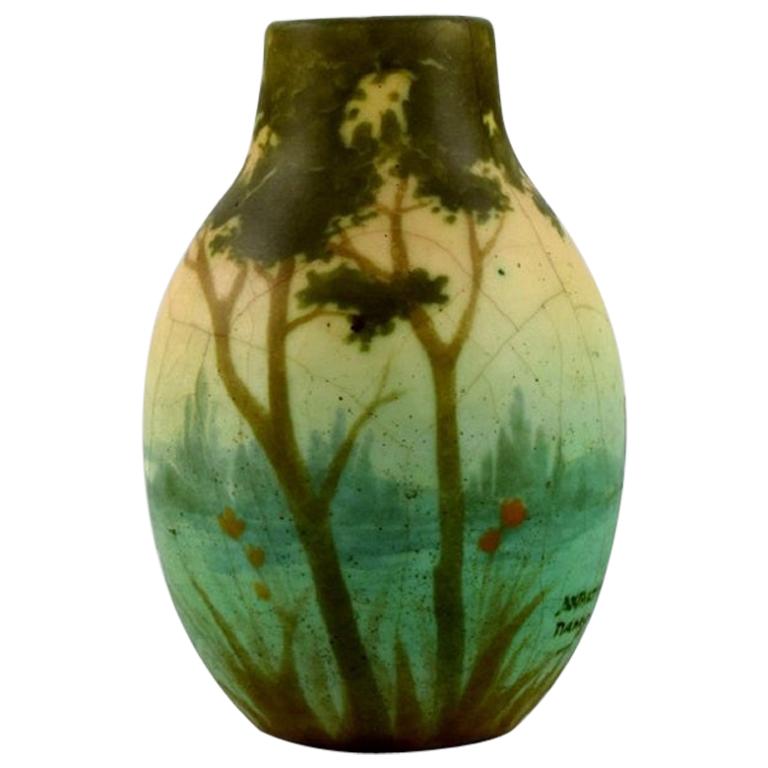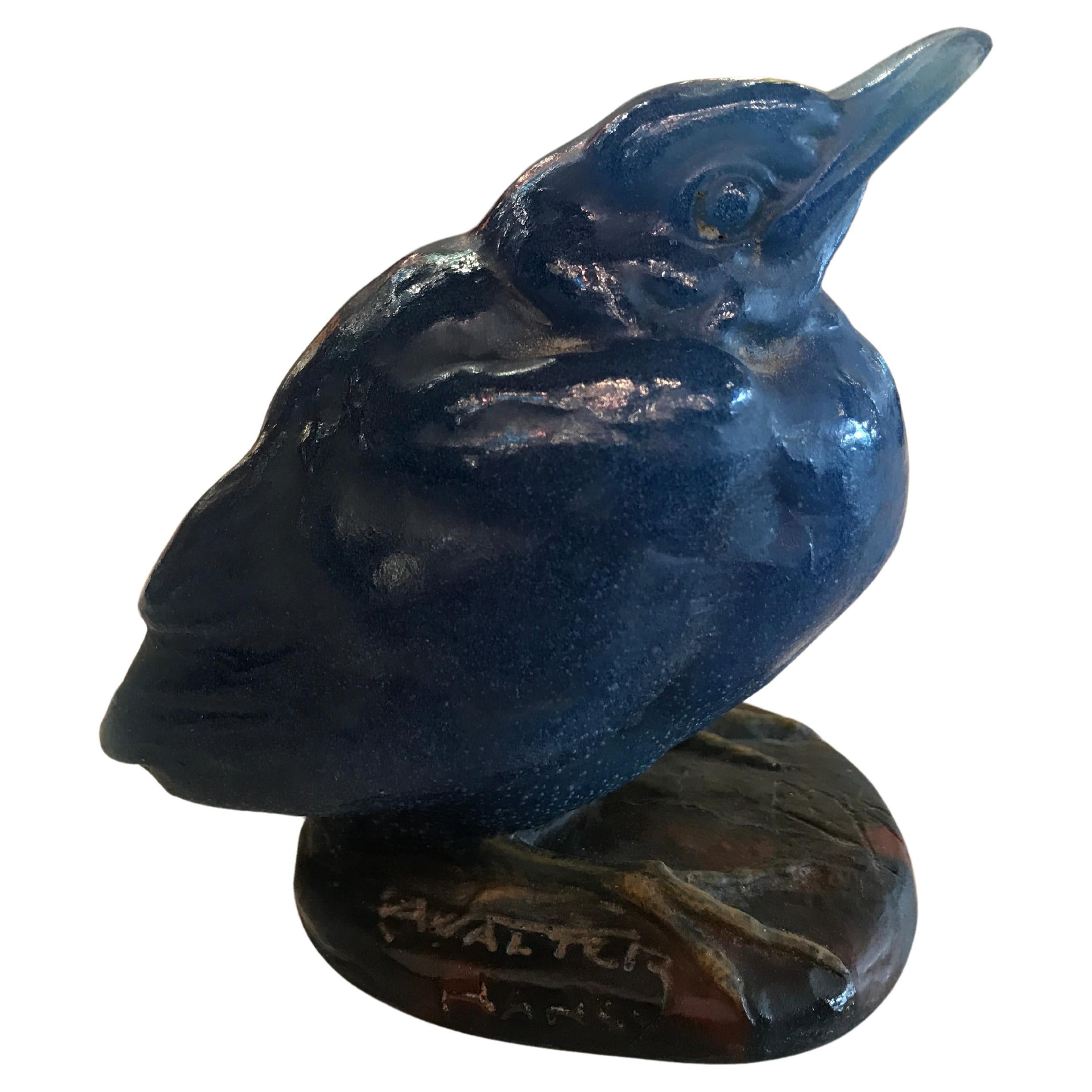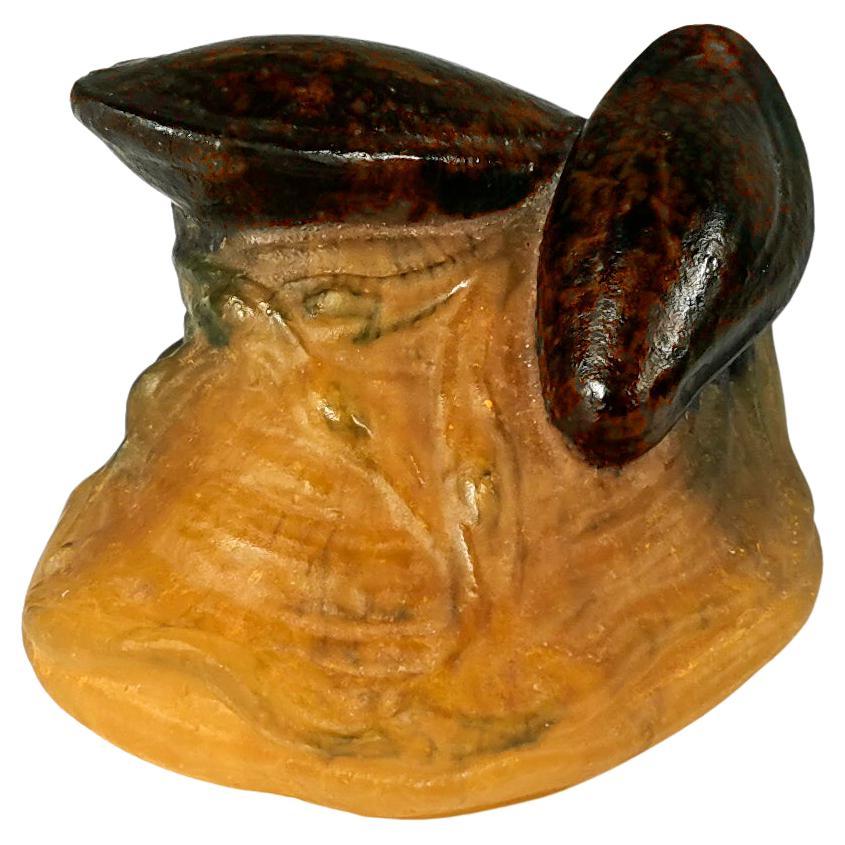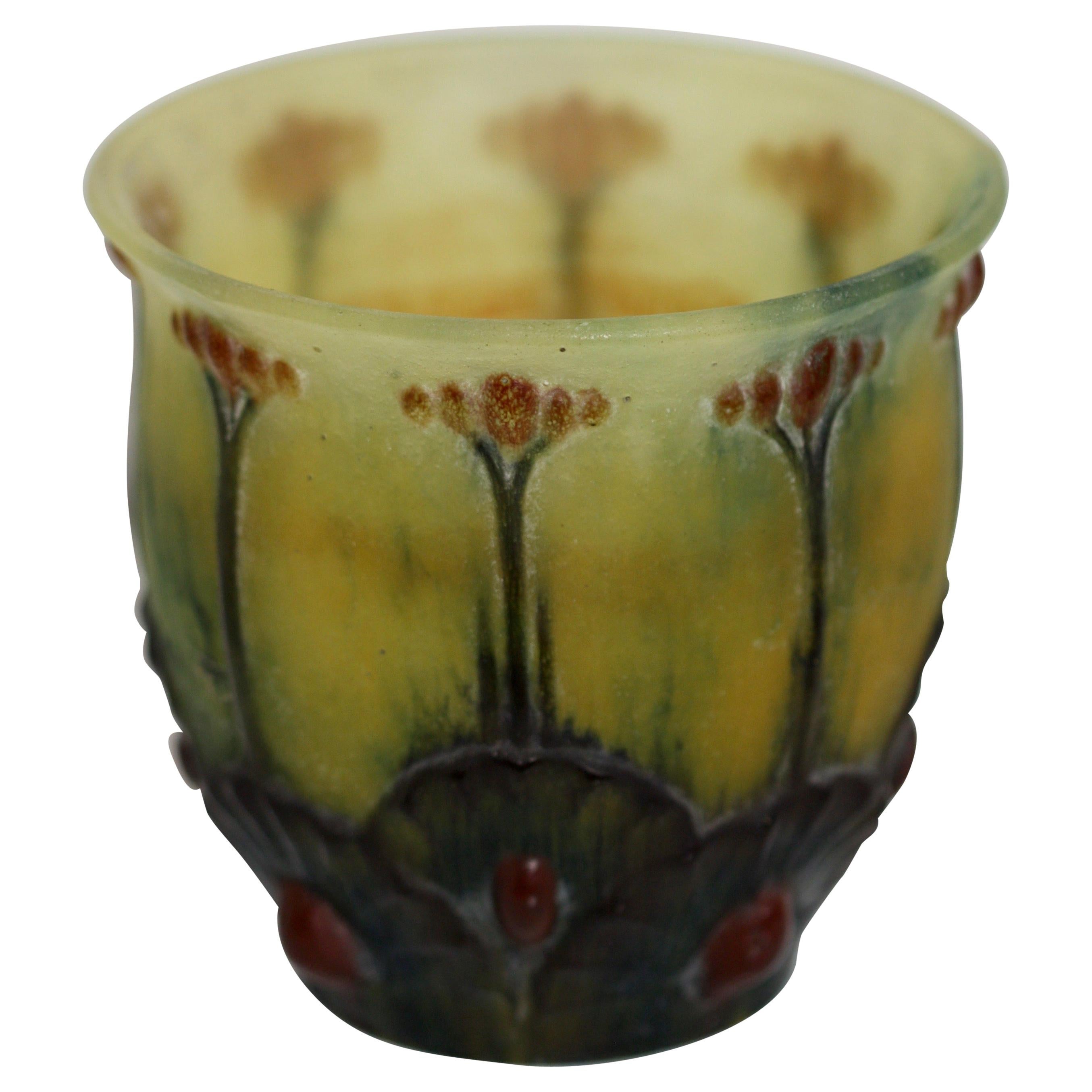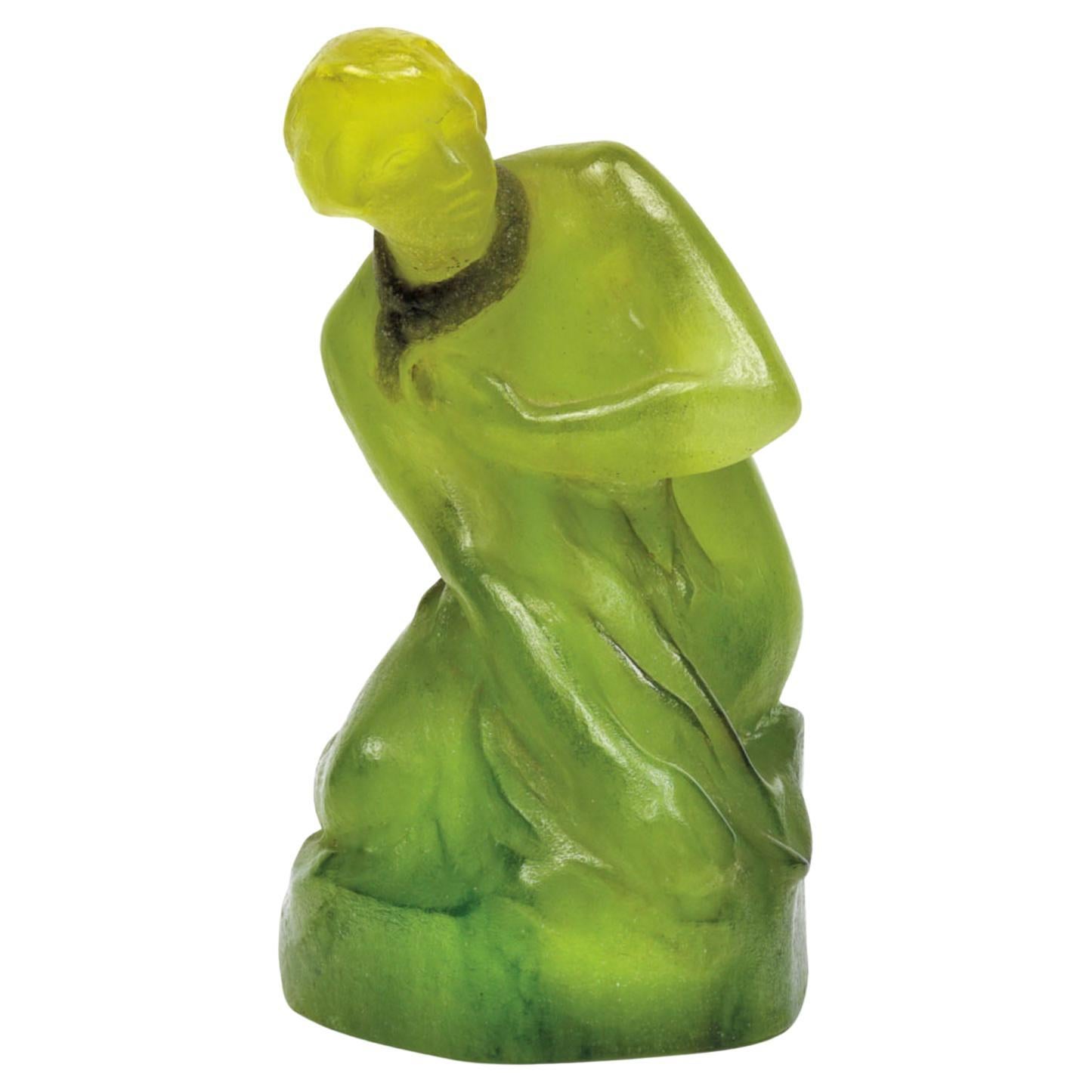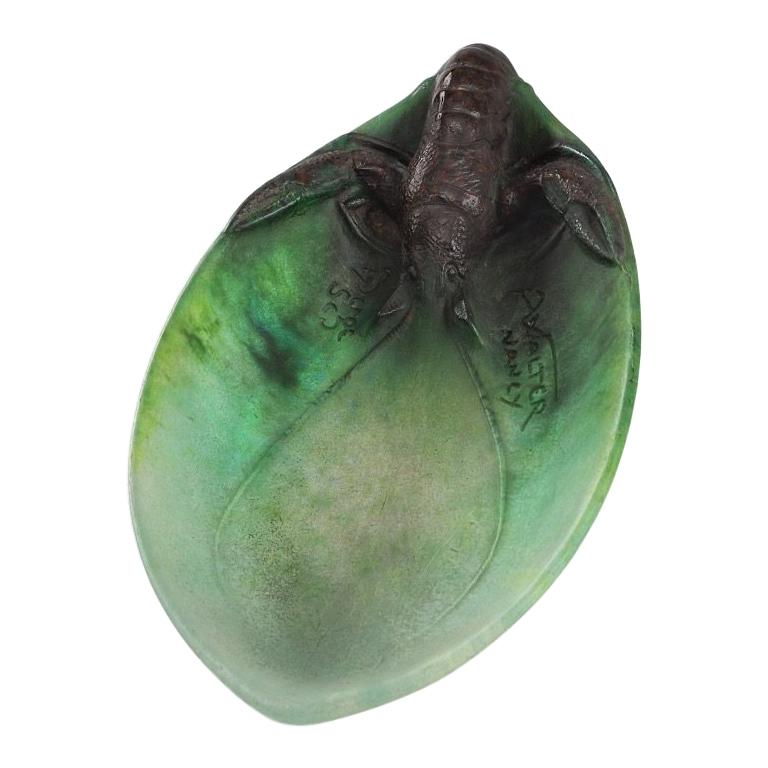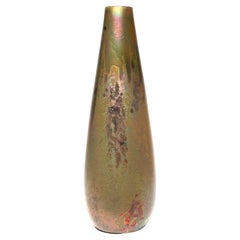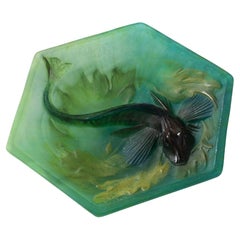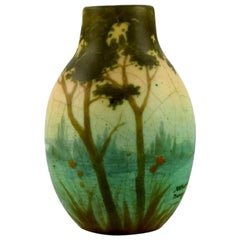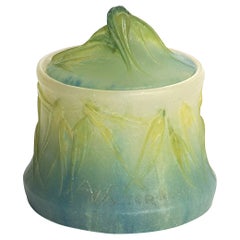
Amalric Walter Pate Deverre Lidded Vase
View Similar Items
Want more images or videos?
Request additional images or videos from the seller
1 of 10
Amalric Walter Pate Deverre Lidded Vase
About the Item
- Creator:Henri Bergé and Amalric Walter (Designer)
- Dimensions:Height: 3.65 in (9.28 cm)Diameter: 3.3 in (8.39 cm)
- Style:Art Nouveau (Of the Period)
- Materials and Techniques:
- Place of Origin:
- Period:1900-1909
- Date of Manufacture:1900
- Condition:Wear consistent with age and use.
- Seller Location:Dallas, TX
- Reference Number:1stDibs: LU1774232833602
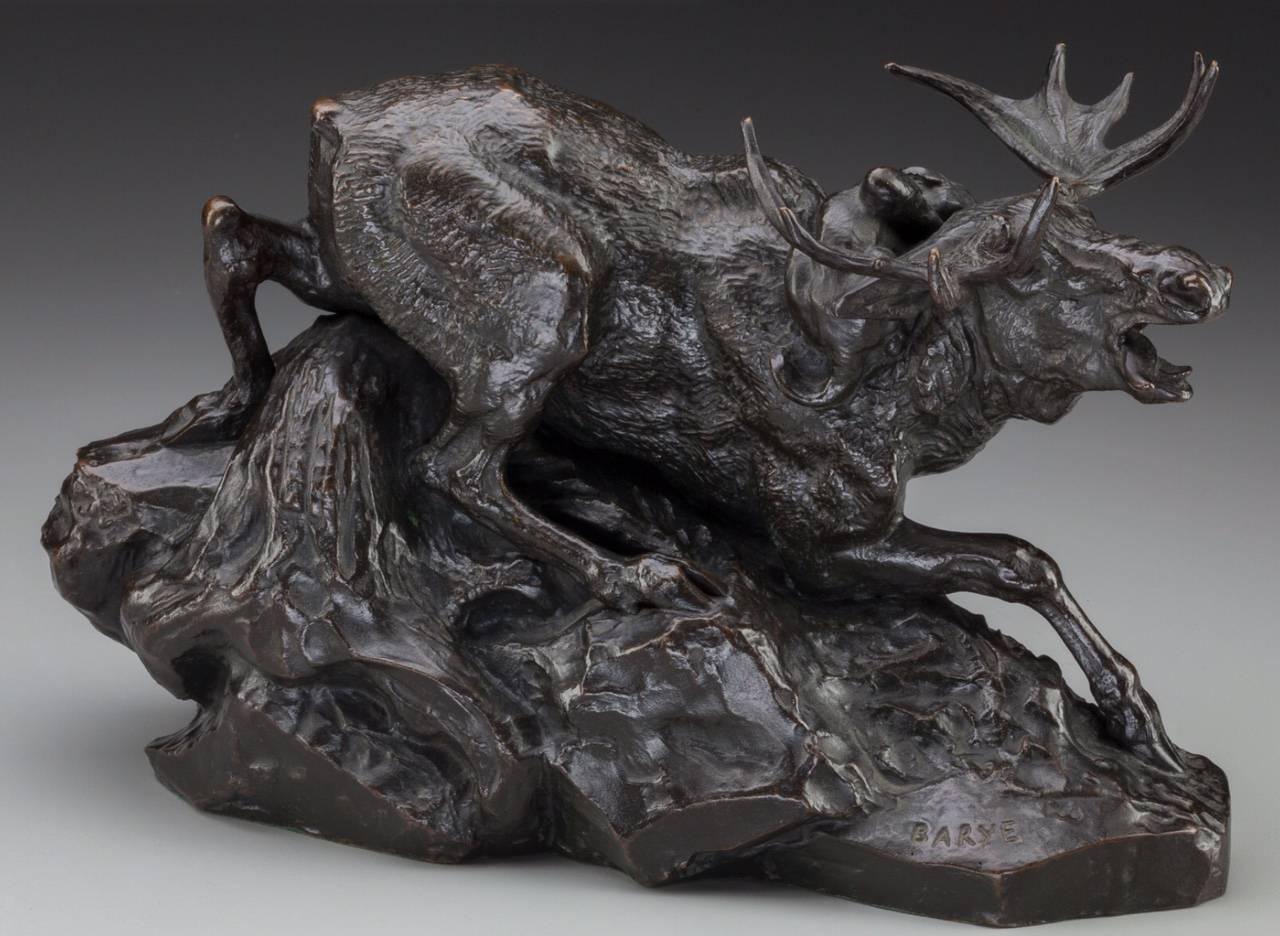
About the Seller
4.9
Gold Seller
These expertly vetted sellers are highly rated and consistently exceed customer expectations.
Established in 2000
1stDibs seller since 2015
403 sales on 1stDibs
Typical response time: 1 hour
More From This SellerView All
- Amalric Walter Pate De Verre Nude Boy FigureBy Amalric WalterLocated in Dallas, TXAlmeric Walter and Henry Mercier Pate De Verre Art Nouveau Figure of a Nude Cherub or boy seated with his hand on his head. A wonderful pâte-de-ver...Category
Antique Early 1900s French Art Nouveau Figurative Sculptures
MaterialsArt Glass
- Daum Nancy Art Nouveau VaseBy DaumLocated in Dallas, TXDaum Nancy Art Nouveau Applied Handle footed Vase. A very rare donut shaped vase with beautiful applied handles. From reds to pinks to creams to green. Height: 5 Inches Width: 3.75 ...Category
Vintage 1910s French Art Nouveau Vases
MaterialsArt Glass
- Monumental Pierre Clement Massier Iridescent VaseBy Clement MassierLocated in Dallas, TXA monumental ceramic vase with iridescent glaze in an elongated bulbous shape by the legendary French ceramist Pierre Clement Massier (1845-1917). Massier is widely considered as...Category
Antique Early 1900s French Art Nouveau Vases
MaterialsPottery
- Large Emile Galle Scenic Cameo VaseBy Emile GalléLocated in Dallas, TXEmile Galle scenic wheel carved and acid etched cameo vase. A beautiful and tall cameo vase by Galle. The 18 - 1/2” tall vase has a background of muted yellow glass near the base, which progresses to blue/gray at mid-vase, and then peach towards the top. Brown, cameo cut trees are generously displayed across the body of the vase, with the addition of a boat in the lake. Signed "Galle". Dimensions: 18 - 1/2” x 10” x 8”. Condition: Very good Émile Gallé (8 May 1846 in Nancy – 23 September 1904 in Nancy) was a French artist and designer who worked in glass, and is considered to be one of the major innovators in the French Art Nouveau movement. He was noted for his designs of Art Nouveau glass art and Art Nouveau furniture, and was a founder of the École de Nancy or Nancy School, a movement of design in the city of Nancy, France. Gallé born on 4 March 1846 in the city of Nancy, France. His father, Charles Gallé, was a merchant of glassware and ceramics who had settled in Nancy in 1844, and his father-in-law owned a factory in Nancy which manufactured mirrors. His father took over the direction of his mother's family business, and began to manufacture glassware with a floral design. He also took over a struggling faience factory and began manufacturing new products. The young Gallé studied philosophy and natural science at the Lycée Imperial in Nancy. At the age of sixteen he went to work for the family business as an assistant to his father, making floral designs and emblems for both faience and glass. In his spare time he became an accomplished botanist, studying with D.A. Godron, the director of the Botanical Gardens of Nancy and author of the leading textbooks on French flora. He collected plants from the region and from as far away as Italy and Switzerland. He also took courses in painting and drawing, and made numerous drawings of plants, flowers, animals and insects, which became subjects of decoration. At the age of sixteen he finished the Lycée in Nancy and went to Weimar in Germany from 1862–1866 to continue his studies in philosophy, botany, sculpture and drawing. In 1866, to prepare himself to inherit the family business, he went to work as an apprentice at the glass factory of Burgun and Schwerer in Meisenthal, and made a serious study of the chemistry of glass production. Some of his early glass and faience works for the family factory at Saint-Clémont were displayed at the 1867 Paris Universal Exposition. In early 1870 he designed a complete set of dishware with a rustic animal designs for the family enterprise. During this time he became acquainted with the painter, sculptor and engraver Victor Prouvé, an artist of the romantic "troubadour" style, who became his future collaborator in the Nancy School. He enlisted for military service in the Franco-Prussian War in 1870, then was demobilised after the disastrous French defeat in 1871 and the French loss to Germany of much of the province of Lorraine, including Meisenthal where he had done his apprenticeship. Thereafter the Cross of Lorraine, the patriotic symbol of the region, became part of his signature on many of his works of art. After his demobilization Gallé went to London, where he represented his father at an exhibition of the arts of France, then to Paris, where he remained for several months, visiting the Louvre and Cluny Museum, studying examples of ancient Egyptian art, Roman glassware and ceramics, and especially early Islamic enamelled...Category
Antique Early 1900s French Art Nouveau Vases
MaterialsArt Glass
- Tall Emile Galle Lily Pedestaled VaseBy Emile GalléLocated in Dallas, TXAn important and exceptional tall cameo vase by Emile Galle. Circa 1900 in the Art Nouveau period. The technique is wheel carved, acid etched and carving to produce this over 20 Inch masterpiece of Tiger Lilies in their various open and closed stages. Galle was foremost a botanist and drew out and designed all his conceptions. What cant be seen in the photos is the cream shadows encompassing all the background flowers and stems. This vase is for serious collectors and those with impeccable taste. Signed: Galle in cameo Measures: Height: 20.2 Inches Diameter: 4.75 Inches Condition: Excellent AVANTIQUES is dedicated to providing an exclusive curated collection of Fine Arts, Paintings, Bronzes, Asian treasures, Art Glass and Antiques. Our inventory represents time-tested investment quality items with everlasting decorative beauty. We look forward to your business and appreciate any reasonable offers. All of our curated items are vetted and guaranteed authentic and as described. Avantiques only deals in original antiques and never reproductions. We stand behind our treasures with a full money back return policy if the items are not as described. Gallé born on 4 March 1846 in the city of Nancy, France. His father, Charles Gallé, was a merchant of glassware and ceramics who had settled in Nancy in 1844, and his father-in-law owned a factory in Nancy which manufactured mirrors. His father took over the direction of his mother's family business, and began to manufacture glassware with a floral design. He also took over a struggling faience factory and began make new products. The young Gallé studied philosophy and natural science at the Lycée Imperial in Nancy. At the age of sixteen he went to work for the family business as an assistant to his father, making floral designs and emblems for both faience and glass. In his spare time he became an accomplished botanist, studying with D.A. Godron, the director of the Botanical Gardens of Nancy and author of the leading textbooks on French flora. He collected plants from the region and from as far away as Italy and Switzerland. He also took courses in painting and drawing, and made numerous drawings of plants, flowers, animals and insects, which became subjects of decoration. At the age of sixteen he finished the Lycée in Nancy and went to Weimar in Germany from 1862-1866 to continue his studies in philosophy, botany, sculpture and drawing. In 1866, to prepare himself to inherit the family business, he went to work as an apprentice at the glass factory of Burgun and Schwerer in Meisenthal, and made a serious study of the chemistry of glass production. Some of his early glass and faience works for the family factory at Saint-Clémont were displayed at the 1867 Paris Universal Exposition. In early 1870 he designed a complete set of dishware with a rustic animal designs for the family enterprise. During this time he became acquainted with the painter, sculptor and engraver Victor Prouvé, an artist of the romantic "troubadour" style, who became his future collaborator in the Nancy School. He enlisted for military service in the Franco-Prussian War in 1870, then was demobilised after the disastrous French defeat in 1871 and the French loss to Germany of much of the province of Lorraine, including Meisenthal where he had done his apprenticeship. Thereafter the Cross of Lorraine, the patriotic symbol of the region, became part of his signature on many of his works of art. After his demobilization Gallé went to London, where he represented his father at an exhibition of the arts of France, then to Paris, where he remained for several months, visiting the Louvre and Cluny Museum, studying examples of ancient Egyptian art, Roman glassware and ceramics, and especially early Islamic enamelled...Category
Antique Early 1900s French Art Nouveau Vases
MaterialsArt Glass
- Loetz Cobalt Papillon Art Nouveau VaseBy Loetz GlassLocated in Dallas, TXThis Loetz vase in the Cobalt Papillon pattern has blue iridescent Papillon design covering the exterior of the vase. Vase is signed on the polished ...Category
Antique Early 1900s Austrian Art Nouveau Vases
MaterialsArt Glass
You May Also Like
- Amalric Walter and Henri Bergé "Flying Fish" Pâte de Verre Vide-Poche Glass DishBy Henri Bergé and Amalric WalterLocated in New York, NYA ravishing compromise between the Art Deco and Art Nouveau styles, this hexagonal pâte de verre vide poche by Amalric Walter and Henri Bergé features a strong architectural shape softened by a lush vortex of pastel colors. A flying fish with raised spine and rigid ribbing on its splayed fins swims languidly through a shallow pool of aqua ripples and speckled kelly green kelp, its body twisting into a serpentine "S," perfectly filling the space within the hexagonal form. Item #: P-20232 Artist: Amalric Walter, Henri Bergé Country: France Circa: 1920 Size: 1.25" height, 7.75" width, 7.25" depth Materials: glass Literature: A similar vide-poche is pictured in Amalric Walter (1870-1959), by Keith Cummings, Kingswinford: Broadfield House Glass Museum, 2006, p. 44, cat. no. 66 The pâte de verre technique is an ancient form of kiln casting, used since the time of the Egyptians, and literally translates to "paste of glass...Category
Vintage 1920s French Art Nouveau Decorative Dishes and Vide-Poche
MaterialsArt Glass
- Glass Paste Plate by Victor Amalric WalterBy Amalric WalterLocated in Ciudad Autónoma Buenos Aires, CYellow glass paste plate with a greenish tint, with a design representing a woman by Victor Amalric Walter (1870-1959). Signature A. Walter, Nancy, Made in France. France, Circa 1...Category
Vintage 1920s French Art Deco Vases
MaterialsGlass
- Amalric Walter for Nancy, Rare Vase in Ceramics with River LandscapeLocated in Copenhagen, DKAmalric Walter (1870-1959) for Nancy. Rare vase in glazed ceramics decorated with river landscape. Beautiful crackled glaze. Museum quality, 1890s. Measures: 14 x 9 cm. In excell...Category
Antique 1890s French Belle Époque Vases
MaterialsCeramic
$1,600 Sale Price20% Off - Art Glass, A. Walter, (Pâte de verre vide-poche by Amalric Walter), FranceBy Almeric WalterLocated in Ciudad Autónoma Buenos Aires, CPâte de verre vide-poche by Amalric Walter. Born in Sèvres on May 19, 1870, Walter first worked at the Manufacture nationale de Sèvres, near Paris, where he decorated and glazed ear...Category
Vintage 1920s Austrian Art Nouveau Figurative Sculptures
MaterialsArt Glass
- Art Nouveau Paperweight with Mussels Amalric Walter & Henri Mercier, NancyBy Henri Bergé and Amalric WalterLocated in Vienna, ATTwo mussels on a yellow stone base covered with algae. Signed 'AWALTER NANCY' and 'hm'. Manufactory: Amalric Walter & Henri Bergé, Nancy, Lorraine, France Dating of manufacture: circa 1920/1930 Designer: Victor Amalric Walter (1870-1959) was a French glass manufacturer mainly known for his pâte de verre pieces. In the Cristalleries Daum at Nancy, France, he met the designer and modelist HENRI BERGÉ, with whom he produced the first pâtes de verre, which at the time were only signed with "Daum Nancy". After the war he continued to work with Henri Bergé. From 1919 to 1935 he cast no fewer than 500 models with Bergé and other famous sculptors or designers, always in few numbers due to the sophisticated technique of glass kiln casting. Henri Mercier...Category
Vintage 1920s French Art Nouveau Glass
MaterialsGlass
- Amalric Walter and Henri Berge Pate de Verre Snail PaperweightBy Almeric WalterLocated in Gainesville, FLPate de verre Snail paperweight by Almeric Walter and Henri Berge, 1905. Great example of Art Nouveau executed in naturalistic style for Daum factor...Category
Antique Early 1900s French Art Nouveau Animal Sculptures
MaterialsGlass



